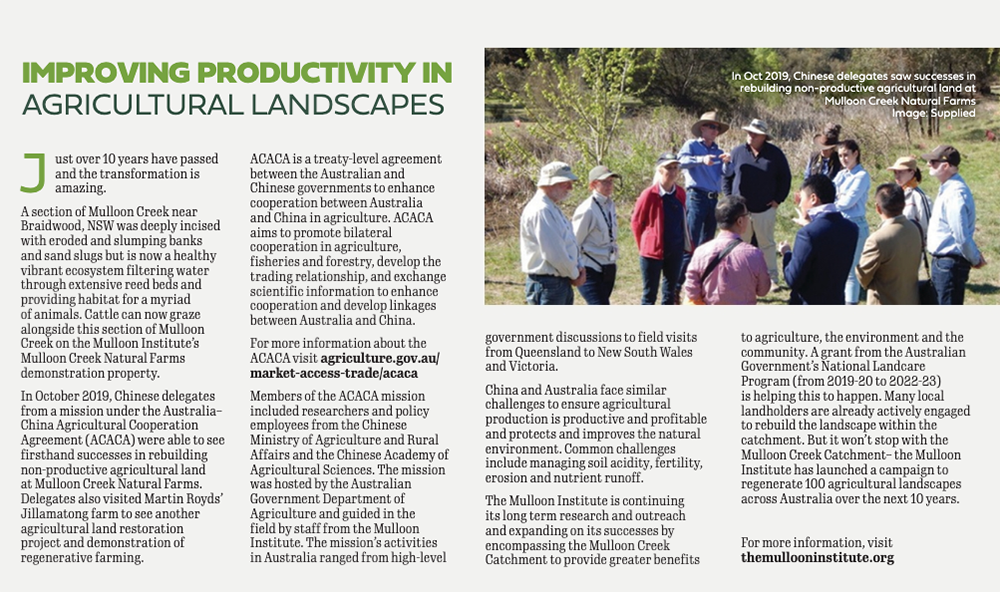Just over 10 years have passed and the transformation is amazing.
A section of Mulloon Creek near Braidwood, NSW was deeply incised with eroded and slumping banks and sand slugs but is now a healthy vibrant ecosystem filtering water through extensive reed beds and providing habitat for a myriad of animals. Cattle can now graze alongside this section of Mulloon Creek on The Mulloon Institute’s Mulloon Creek Natural Farms demonstration property.
In October 2019, Chinese delegates from a mission under the Australia-China Agricultural Cooperation Agreement (ACACA) were able to see firsthand successes in rebuilding non-productive agricultural land at Mulloon Creek Natural Farms. Delegates also visited Martin Royds’ Jillamatong farm to see another agricultural land restoration project and demonstration of regenerative farming.
ACACA is a treaty-level agreement between the Australian and Chinese governments to enhance cooperation between Australia and China in agriculture. ACACA aims to promote bilateral cooperation in agriculture, fisheries and forestry, develop the trading relationship, and exchange scientific information to enhance cooperation and develop links between Australia and China.
For more information about ACACA visit agriculture.gov.au/market-access-trade/acaca
Members of the ACACA mission included researchers and policy employees from the Chinese Ministry of Agriculture and Rural Affairs and the Chinese Academy of Agricultural Sciences. The mission was hosted by the Australian Government Department of Agriculture and guided in the field by staff from The Mulloon Institute. The mission’s activities in Australia ranged from high-level government discussions to field visits from Queensland to New South Wales and Victoria.
China and Australia face similar challenges to ensure agricultural production is productive and profitable and protects and improves the natural environment. Common challenges include managing soil acidity, fertility, erosion and nutrient runoff.
The Mulloon Institute is continuing its long term research and outreach and expanding on its successes by encompassing the Mulloon Creek Catchment to provide greater benefits to agriculture, the environment and the community. A grant from the Australian Government’s National Landcare Program (from 2019-20 to 2022-23) is helping this to happen. Many local landholders are already actively engage to rebuild the landscape within the catchment. But it won’t stop with the Mulloon Creek Catchment – The Mulloon Institute has launched a campaign to regenerate 100 agricultural landscapes across Australia over the next 10 years.
For more information, visit themullooninstitute.org
